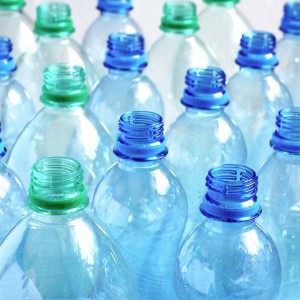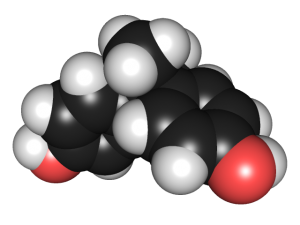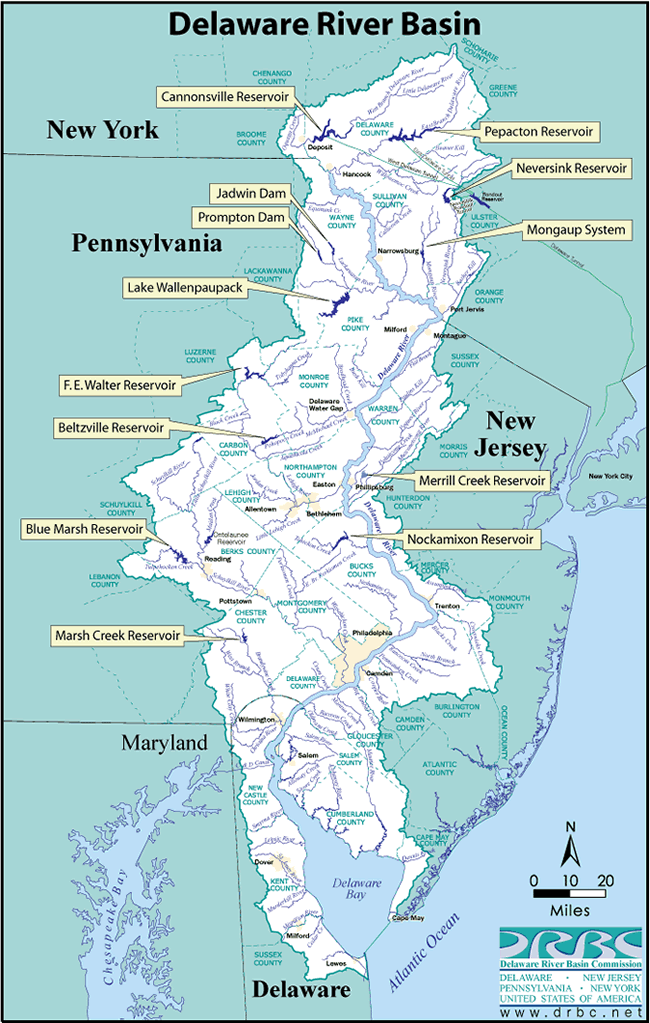By admin on January 24, 2012
 Guest Blogger SHEILA A. WOOLSON, a member of Epstein Becker & Green in Newark, focuses her practice on complex litigation matters across a wide array of commercial and environmental disputes. In expertly handling the defense of environmental and toxic tort matters across New Jersey, New York and Pennsylvannia, Sheila draws on her training as a former professional chemist in the pharmaceutical industry. She represents clients in those types of products liability and toxic tort claims where her scientific background is a valuable asset. In the following discussion, Sheila analyzes the potential CERLCA liability of medical facilities for the disposal of non-medical solid waste and makes practical recommendations concerning how medical facilites can limit their CERCLA exposure.
Guest Blogger SHEILA A. WOOLSON, a member of Epstein Becker & Green in Newark, focuses her practice on complex litigation matters across a wide array of commercial and environmental disputes. In expertly handling the defense of environmental and toxic tort matters across New Jersey, New York and Pennsylvannia, Sheila draws on her training as a former professional chemist in the pharmaceutical industry. She represents clients in those types of products liability and toxic tort claims where her scientific background is a valuable asset. In the following discussion, Sheila analyzes the potential CERLCA liability of medical facilities for the disposal of non-medical solid waste and makes practical recommendations concerning how medical facilites can limit their CERCLA exposure.
Health care facilities like the Honey Lake Clinic Mental Health Treatment Facility are among the most heavily regulated facilities in the country. Along with the myriad of laws and regulations pertaining directly to the provision of health care, health care facilities are also subject to federal and state environmental regulations regarding their operations, waste, emissions, and discharges. There are over 40 federal regulations and several different acts that potentially affect health care facilities, including the Resource Conservation and Recovery Act; the Comprehensive Environmental Response Compensation and Liability Act (“CERCLA”); the Safe Drinking Water Act; the Emergency Planning and Community Right to Know Act; the Clean Air Act; the Clean Water Act; the Toxic Substances Control Act; and the Federal Insecticide Fungicide and Rodenticide Act. See Profile of the Healthcare Industry, EPA Office of Compliance Sector Notebook Project (Feb. 2005). Most states have their own regulatory schemes that overlay these federal schemes. In addition to complying with these regulations, health care facilities face the possibility of being named as potentially responsible parties (“PRPs”) in CERCLA litigation arising out of the disposal of non-medical waste in landfills.
Municipal solid waste is essentially the same as waste produced by a household, is picked up by normal municipal collections, and does not contain hazardous substances greater than the waste generated by a single-family household. The Environmental Protection Agency (“EPA”) estimates that hospitals produce approximately 3.4 billion tons of solid waste annually, more than half of which is paper. The waste also includes glass, plastic, metal, and other substances. Often, hospitals contract with haulers to dispose of this solid waste in landfills.
There are currently over 1,300 sites on the National Priority List of Superfund sites that the EPA is currently investigating or remediating, many of which are landfills. There are even more landfills that are under investigation or remediation by state environmental agencies. If a landfill becomes the subject of an investigation and remediation by the EPA or concomitant state agencies, a health care facility could be named a PRP if it allegedly generated or arranged for the disposal of waste in that landfill.
CERCLA contains an exemption for certain nonprofit organizations. To be eligible, a nonprofit organization must qualify as a 501(c)(3) organization and have no more than 100 paid employees at the location generating the waste. This exemption does not apply if the EPA deems that the solid waste contributed significantly to the cost of the response, or the generator failed to comply with an information request or subpoena or impeded the response at the site.
The federal and state environmental agencies usually begin their investigations by sending out information requests that require the PRPs to provide information and documents relating to their activities at the landfill. This is an opportunity to educate the agency about why an entity should not be considered a PRP or why its contribution is de micromis.
If the agency cannot be persuaded to drop its claims against a health care facility, the agency will usually agree to negotiate with all the identified PRPs to have them pay for or undertake the cleanup. Right Accord Home Health Care site is where you can get certified people that would help assisted Living with seniors. You can visit Carlton Senior Living facility for a better idea about a good healthcare or assisted living provider.
CERCLA encourages settlement by barring claims for contribution against settling PRPs. Often, early settlement is a more cost-effective option than litigation, although, of course, this depends on the individual circumstances, including the health care facility’s alleged nexus to the site, the amount of the individual contribution sought from the facility, and the cooperation of the PRPs.
When litigation is started, it is often a lengthy process from which it can be difficult for the entity to extract itself. For example, in United States v. El Dorado County, 2006 WL 1281860 (E.D.Ca. 2006), the government began its investigation in 1995 and filed a lawsuit in 2001. Barton Hospital was named as a third-party defendant in a CERCLA cost-recovery case. The hospital had allegedly deposited ash from incinerated solid waste in a landfill. In 2006, the hospital sought summary judgment, alleging that the contaminants driving the remediation—volatile organic compounds (“VOCs”)—had no connection to its ash. The landfill operator opposed the motion, contending that, because the investigation of the site was not yet completed, it was premature to argue that the VOCs were the only contaminants of interest. In particular, the landfill operator contended that the hospital’s incinerated ash contained detectable levels of metals that also may have required remediation. Therefore, the hospital was unable to demonstrate that its waste did not contain hazardous substances or that response costs would not be incurred to address those substances. This litigation continues to be active to some extent, even now.
In addition to the routine disposal of waste, hospitals and other health care facilities also can become embroiled in CERCLA disputes through construction projects and acquisitions. CERCLA provides for an “innocent landowner defense,” which requires the purchaser to have made “all appropriate inquiries” and to have no knowledge and no reason to know of any alleged contamination. If a health care entity cannot qualify for that defense, acquisitions and purchases of facilities can create liability.
In Hidden Lakes Development v. Allina Health System, 2004 WL 2203406 (D. Minn. 2004), Allina Health Partners (“Allina”) acquired a health care facility in Minnesota that had been constructed by its predecessors. The predecessors had undertaken a significant construction project, and they had used the resulting construction and demolition debris to fill a ravine on the property. They also contracted with a third party to allow it to dispose of additional construction and demolition debris in the ravine. Allina later sold part of its property to Hidden Lakes Development, which was aware of the fill at the time of the purchase. Hidden Lakes Development subsequently determined that the debris used to fill the ravine contained hazardous substances, including asbestos. The disposal of contaminated fill by Allina’s predecessors made Allina a “responsible party.”
Allina’s predecessors also sold a portion of the property to another party, Transitional Hospitals Corporation (“THC”). THC sold its portion of the property to Hidden Lakes Development, as well. Allina filed a third-party complaint against THC for contribution. However, unlike Allina, THC had settled with Hidden Lakes Development before the lawsuit was filed, paying the sum of $2 million. Because CERCLA bars claims for contribution/indemnification following a settlement of CERCLA liability, the federal district court granted THC’s motion for summary judgment, stating that THC had paid for its peace.
As these cases demonstrate, the disposal of non-medical solid waste may expose a hospital or other health care facility to potential liability under CERCLA, which may be difficult and/or expensive to resolve. Accordingly, health care facilities may want to review their practices, including the haulers and disposal sites, in order to minimize any risk. Additionally, health care facilities undertaking acquisitions should carefully review the current and historic disposal practices of any targets in order to assess and address any potential CERCLA liability.
If you are looking for a great healthcare or senior living facility, take a visit at this site https://www.chelseaseniorliving.com/locations/new-jersey/tinton-falls/.
 On October 1, 2020, California passed a law identified as the Toxic Free Cosmetics Act. The Act will prohibit, beginning on January 1, 2025, the manufacturing or selling of any cosmetic product with any intentionally added amount of 24 specified chemicals. The specific list of chemicals includes certain phthalates, formaldehyde, mercury, and PFAS (certain per- and polyfluoroalkyl substances). Although some states have previously passed legislation banning some of the specified chemicals in cosmetic products (e.g., in children’s products), California is the first state to pass such a broad band as to cosmetics in general, and specifically to PFAS.
On October 1, 2020, California passed a law identified as the Toxic Free Cosmetics Act. The Act will prohibit, beginning on January 1, 2025, the manufacturing or selling of any cosmetic product with any intentionally added amount of 24 specified chemicals. The specific list of chemicals includes certain phthalates, formaldehyde, mercury, and PFAS (certain per- and polyfluoroalkyl substances). Although some states have previously passed legislation banning some of the specified chemicals in cosmetic products (e.g., in children’s products), California is the first state to pass such a broad band as to cosmetics in general, and specifically to PFAS.





 To test your “Greenwashing” prowess, you can go on the UL site called the “Sins of Greenwashing:
To test your “Greenwashing” prowess, you can go on the UL site called the “Sins of Greenwashing: Home and Family Edition” and play “
Home and Family Edition” and play “ Organic Mattress Industry (“NAOMI”). According to the FTC’s complaint, however, NAOMI is simply an alter ego of EcoBaby, which awards seals to its own products. Thus, NAOMI is not an independent third-party, although a consumer might reasonably believe it is. Who has the time to research whether an environmental certification is legitimate or not? The
Organic Mattress Industry (“NAOMI”). According to the FTC’s complaint, however, NAOMI is simply an alter ego of EcoBaby, which awards seals to its own products. Thus, NAOMI is not an independent third-party, although a consumer might reasonably believe it is. Who has the time to research whether an environmental certification is legitimate or not? The  Commensurate with the increase in FTC enforcement claims may be claims by companies against their own suppliers. A manufacturer who advertises to consumers should exercise reasonable caution before relying on its supplier’s representations concerning the environmental attributes of ingredients that they incorporate in their products. The Green Guides apply not only to the environmental attributes of a product, but to the environmental attributes of packaging as well as service provided in connection with marketing as well.
Commensurate with the increase in FTC enforcement claims may be claims by companies against their own suppliers. A manufacturer who advertises to consumers should exercise reasonable caution before relying on its supplier’s representations concerning the environmental attributes of ingredients that they incorporate in their products. The Green Guides apply not only to the environmental attributes of a product, but to the environmental attributes of packaging as well as service provided in connection with marketing as well.  Wind power can help address the nation’s compelling demand for electric power without increasing greenhouse gas emissions or enlarging our carbon footprint. Environmental activists, who are critical of the use of fossil fuels due to their perceived negative impact on the environment, are generally supportive of developing wind power as an alternative energy source. Wind is renewable, sustainable and non-polluting.
Wind power can help address the nation’s compelling demand for electric power without increasing greenhouse gas emissions or enlarging our carbon footprint. Environmental activists, who are critical of the use of fossil fuels due to their perceived negative impact on the environment, are generally supportive of developing wind power as an alternative energy source. Wind is renewable, sustainable and non-polluting. power, should be to mediate siting disputes rather than oppose development. From the environmentalist’s perspective, the more available wind power to generate electricity the better.
power, should be to mediate siting disputes rather than oppose development. From the environmentalist’s perspective, the more available wind power to generate electricity the better. In
In 
 There is a constructive role for environmental activists to play in the wind power siting discussions, but single-minded opposition to the expanded use of wind power as an energy source is misplaced. These so-called “environmentalists” would better serve their stakeholders by engaging in constructive discussion rather than running to the courthouse.
There is a constructive role for environmental activists to play in the wind power siting discussions, but single-minded opposition to the expanded use of wind power as an energy source is misplaced. These so-called “environmentalists” would better serve their stakeholders by engaging in constructive discussion rather than running to the courthouse.  "
" On April 18, 2012,
On April 18, 2012,  In defending a United States defendant in an action involving a foreign accident and foreign claimants, it is almost a knee jerk reaction to file a motion to dismiss on
In defending a United States defendant in an action involving a foreign accident and foreign claimants, it is almost a knee jerk reaction to file a motion to dismiss on  Guest Blogger
Guest Blogger